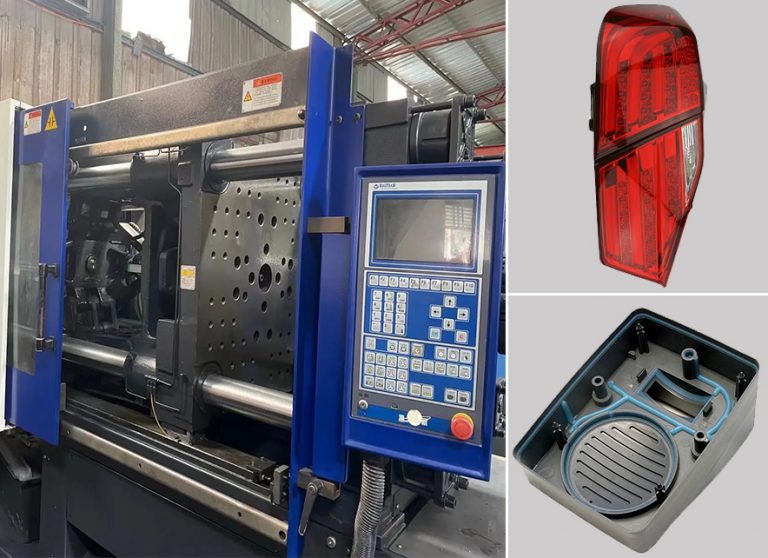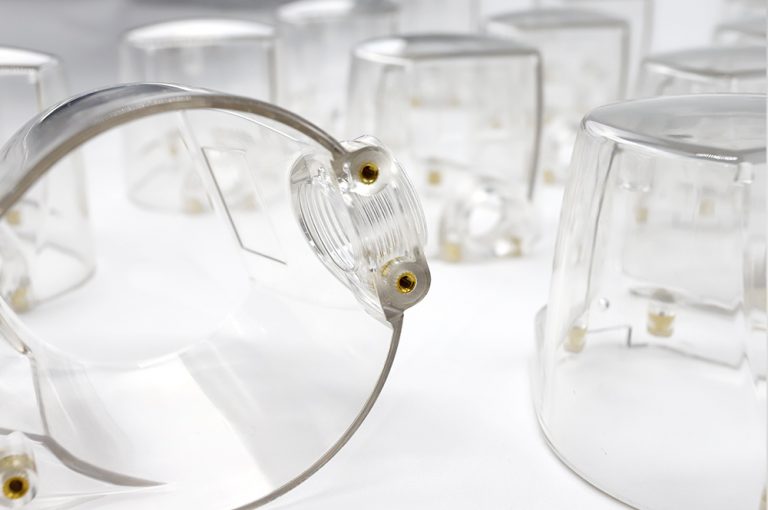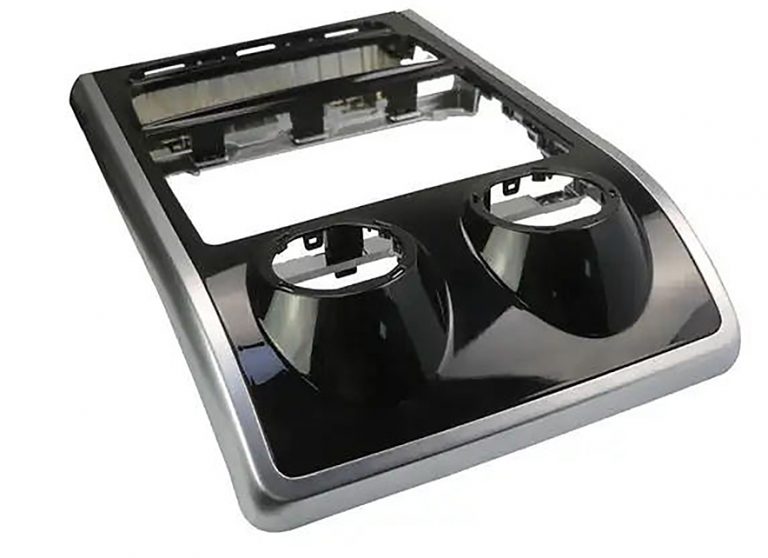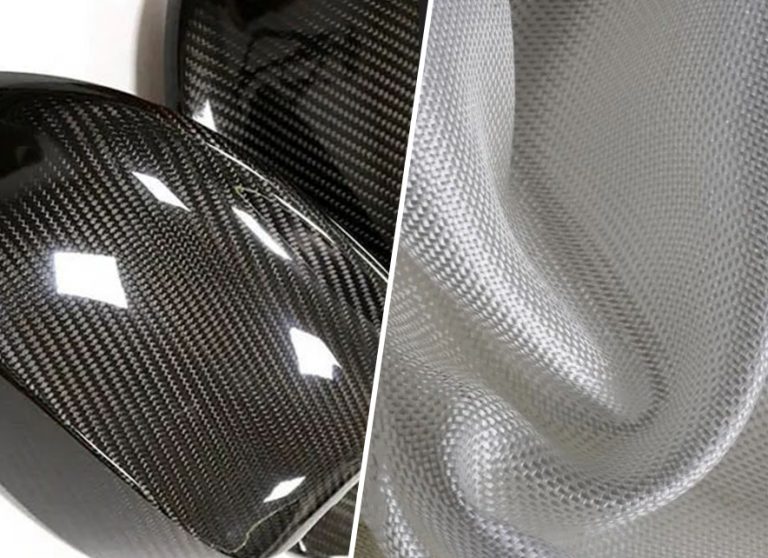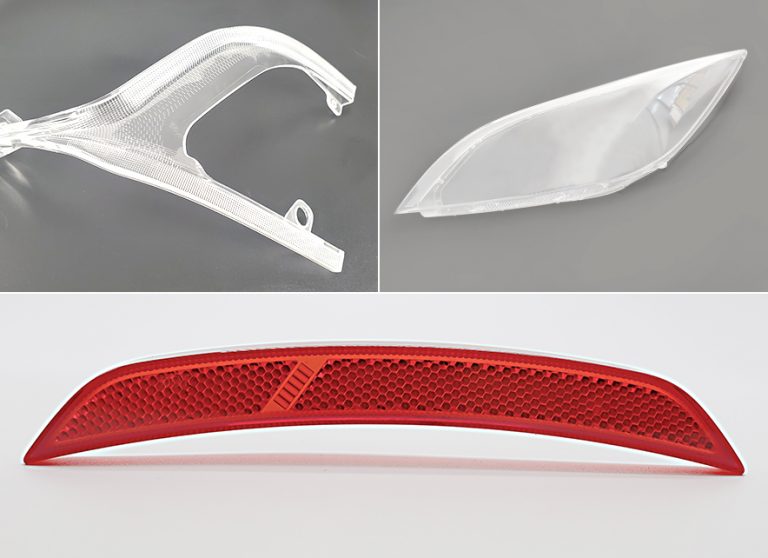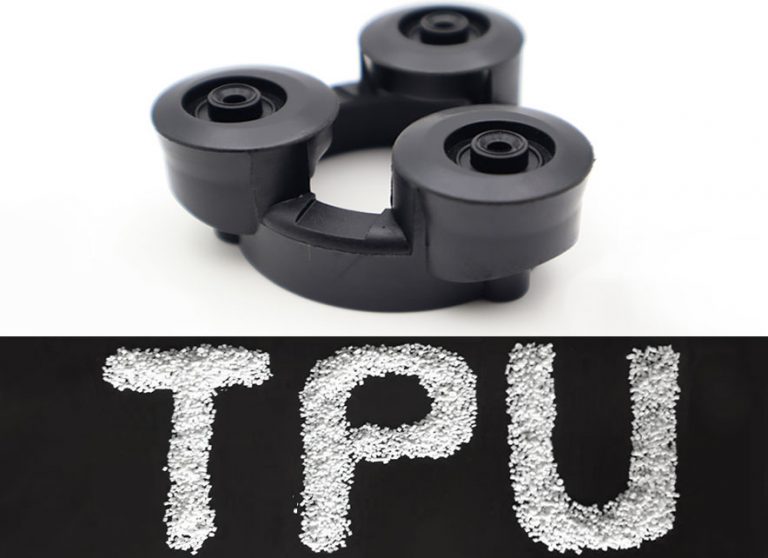Cases for soft rubber mold

Posted on : February 10, 2022 By GREFEE

Soft rubber material is a collective name for soft materials. Its hand feeling is soft and mild,. There are many types of soft rubber materials which include rubber and plastics, such as rubber, silicone rubber, TPU, TPE, soft PVC,etc.
Main properties of soft rubber products that we mainly concerned include: hardness, elasticity, corrosion resistance, wear resistance, cracking, coloring performance, high (low) temperature resistance, cost and processing technology, etc. If it is applied in daily supplies or baby accessories, few factors that we need to consider which include whether the material is harmful, smelling, feeling comfortable, etc.
Soft rubber materials are being widely used in many areas in our daily life such as follows:
1.Soft rubber gloves in medical industry
2.Electronic products, mobile phone cases, plugs, sealing rings, cushions, earphone covers, etc.

Characteristics of TPE, TPU, PVC materials and frequently-used materials
As a thermoplastic elastic material, thanks for the advantages of TPE products, like colorability, environmentally-friendly and toxicity free, it not only can be recycled and molded but also can be secondary injection molded, even be over molded with PP, PE, PC, ABS and other matrix materials.
Advantages of TPE
A, Safe and toxicity-free.
B, Wide hardness range.
C, Excellent properties of coloration, soft touching, weather fastness, fatigue resistance and temperature resistance, superior processing performance, no need vulcanization, higher processing efficiency than rubber, which can be recycled to save cost.
It not only can be secondary injection molded but also can be over molded with PP, PE, PC, ABS and other matrix materials. Also, can be molded separately.
Disadvantages of TPE
A, In the aspect of heat resistance, TPE cannot match rubber in the respect of resilience, so it has a narrower application comparing with rubber. The physical performance of TPE will be significantly influenced by the continual increased temperature.
B, The compression distortion, resilience, and durability of TPE is poor comparing to rubber. Meanwhile, the price is higher than other similar rubber materials as well.
Application ranges of TPE
All kinds of optical cable, cable, car sealing strip, steering wheel, bumper, brake tubing, cushion, coating, modified asphalt, plastic modification, bottle caps, straws, rubber bands, condoms, manual and power tools used for manufacturing, blood transfusion bags, syringes, infusion bags, gloves,etc.
The Chinese name of TPU is thermoplastic polyurethane elastomer which is a high polymer material composed of diphenylmethane diisocyanate (MDI) or toluene diisocyanate (TDI) and other diisocyanate molecules and macromolecular polyols, low molecular polyols (chain extender). There’re many kinds of forming processes including injection molding, blow molding, compression, extrusion molding, etc. Among all of them, injection molding is the most common one.
Advantages of TPU
- A, Wide hardness range.
- B, High mechanical strength .
- C, Outstanding cold resistance .
- D, Good processing performance .
- E, Good wearing resistance, toughness, and strong tearing resistance.
- F, Oil resistance, water resistance, and mycotic resistance.
Disadvantages of TPU
- poor weather fastness
- poor compressibility
- Poor hot water resistance
- weak formability
- higher cost than silicone rubber
- poorer softness property than silicone rubber
Application ranges of TPU
Commonly used in construction, electrical and electronic, textile, automobile, machinery, leather paper, medicine and medical treatment, etc.
PVC is being widely commonly used in different areas due to its advantage of lower cost, which is one of the plastic products having the largest production in the world.
PVC resin is a powder material in the colour of white or light yellow that is allowed to add different additives according to different uses. With a certain amount of plasticizer combined with PVC resin, PVC material has a wide range of shaping possibilities, no matter it is hard, soft, or transparent due to its diverse physical and mechanical properties.
The density of pure PVC is 1.4g/cm3, while the density of PVC plastic parts with plasticizer and filler is generally 1.15-2.00g/cm3.
The softness, elongation at break and cold resistance of soft PVC will increase; however, the brittleness, hardness and tensile strength will decrease. Due to its great electrical insulating performance, it normally works as low-frequency insulating material. Besides, it also demonstrated excellent chemical stability. Soft PVC discolored due to its poor thermal stability, as soft PVC will decompose and release HCL gases if it is long term heated. By this, its application range become narrow and the temperature of using normally is between -15~55℃.
Advantages of PVC
PVC has good properties of softness, cold resistance, wear resistance, acid resistance, alkali resistance, corrosion resistance, and tear resistance, also has excellent welding performance.Its physical properties are better than that of rubber and other coiled materials.
Disadvantages of PVC: PVC resin is not heat-resisting and will get sticky under a slightly higher temperature and poor hand feeling.If the temperature gets relatively higher, PVC will go into decomposition, yellowing and darkening. PVC resin is not solvent resistant so can be dissolved by many organic solvents. The elasticity of PVC is normally poor.
Applied in chemical industry, electroplating, electrolytic cell lining, insulating pad, train, car interior and auxiliary materials, etc.
Selection of steel
TPE and TPU are abrasive resist and corrosion resist. When choosing mold steel, we should consider factors, like quantity and quality of the product. For mass production, it’s a reasonable investment for the initial cost of high-quality mold.
| Steels | Performance of steels | Mold parts |
| P-20 | good machining property after pre-hardening treatment, high carbon steel, all-purpose steel. Disadvantages: may rust if being improperly stored | Mold base, de-molding plate, as well as some cavities(need nickel or chrome plated to prevent rust). |
| H-13 | High-quality all-purpose tool steel. Either can be polished or heat treated. Good corrosion resistance. | Mold cavity plate and core plate |
| S-7 | High hardness, good toughness, all-purpose tool steel. Good machining performance, impact resistance, good polishing performance.weakness: high cost. | Mold cavity plate, core plate, thin plate, and thin-wall part. |
| A-2 | Excellent high-toughness tool steel. Good performance of heat treating and polishing. | Stripper push rod, stripper sleeve, and stripper push plate. |
| D-2 | Excellent hardness, excellent wear resistance, high vanadium content, slightly brittle. weakness: hard to machine. | Gate module, an insert to prevent abrasion and wear. |
| 420 SS | Excellent corrosion resistance. Good performance of heat treating and polishing. weakness: high cost | Cavity mold block, ejector rod, sleeve, etc |
PVC is a strong acid material, so can only choose acid resistant material to make the mold,. Besides, the option on steel depends on the quantity and quality of the product needed.
| Steels | Performance of steels | Mold parts |
| S136H | Mirror surface mold, high anti-acid, can ensure the cooling pipe from rusting. Excellent performance of mirror polishing and corrosion resistance | Mold core, slide, lifter |
| S136 | Mirror surface mold, high acid resistance after quenching, can ensure that the cooling pipe is not corroded. Good dimensional stability for heat treatment, hardness meet to 50-52, has properties of polishing, wear and corrosion resistance. | Mold core, slide, lifter |
| 8407 | High purity, toughness is better than ordinary H13 series hot working steel, good thermal fatigue resistance | Mold plate, mold core plate, lifter, slide, sprue bushing |
Gate types of soft rubber mold
Most traditional gates are suitable for the manufacturing of TPE, TPU and PVC materials. The type of gate and the relative position to the part may affect the following aspects:
- Part filling
- The clearing or residue of the gate
- The appearance beauty of the part
- Part size, including warping
Side gate/Edge gate
- Edge gate can be manufactured, modified, and maintained easily. The side gate and edge gate often match with traditional gating runner and cold runner.
- Gate depth (D) should be 15 to 30 percent of the wall tThe gate depth range should be between 15% to 30% wall thickness in gate entrance.Under normal conditions, ‘D’ starts from the starting point in the safest way.
- The gate width should start from area where it is 1.0-1.5 times of gate depth.
- The gate length should be as long as the gate depth or a bit longer than gate depth.
Sub gate/ Tunnel gate
Sub gate or tunnel gate removes automatically. In the demolding process, mold steel makes parts separate from runners.
As the friction coefficients and elongation limitations, so soft and medium-hard composite materials for cashew-shape sub gate is not a good choice.
Fan gate
Fan gate works as a streamlined variant of the side gate. Fan gate plays an auxiliary role during the process of injecting the material into cavities. It also helps with preventing gate wrinkles or part warping. Products which has high flatness demands usually relies on fan gate and no streamline marks can not read through on the products.
Sprue gate
Fan gate is a streamlined variant of the side gate, which not only helps with injecting material into the cavities but also alleviate the gate wrinkles or part warping phenomenon. It is a product that is favorable for high flatness products or products without streamline marks.
Diaphragm gate
Diaphragm gate is the option for keeping the concentricity in rounded parts as it enables the material being equally inject into cavities and is less likely to cause welding lines. While, it is difficult to keep the flatness with applying center gate or diaphragm gate because the anisotropic shrinkage. Ring gate is applied for the periphery of the ring part.
Gate location
In both the flow direction and flow cross direction, soft rubber materials demonstrates diverse physical properties as they are anisotropic. This impacts the final performance of parts largely as the different products be used per scheduled. There are two methods to monitor the material flow situation, eyes or flow analysis procedures.
“Gate wrinkles” is a usual phenomenon during processing which results from the parts shrink around the gate area due to the high molding residual stress and shrinkages of the materials. If met filling issues in the thin-walled parts, we can use an extra flow channel or regulate the wall thickness more or less to retrace the flow state or we can consider a second gate for part filling if it is necessary.
Suggested gate locations:
- Considering the respects of parts filling and avoidance of gaps and collapse , the maximum cross section is favorable.
- Minimize obstacles in the material flowing path (flow around the mold core or pin rod) as much as possible.
- Minimize spiral flowing marks as much as possible.
- Molding residual stress around the gate should not affect the aesthetic value and properties of the parts.
- Minimize streamlines traces in decorative areas.
- Minimize the possibility of welding lines.
- Easy to remove gate manually or automatically.
- Minimize the length of the flowing path as much as possible.
| Gate types | Advantages | Disadvantages |
| Edge/Side/Fan gate | • Suit for flat part • Easy to modify | • Gates/runners are not easy to remove after molding • Obvious gating marks |
| Sub gate | • Gates drop automatically • Minimum gating marks | • Machining is relatively hard to achieve |
| Diaphragm gate | • High concentricity • Suits for rounded part • No welding lines | • Relatively more waste material • Gates are not easy to remove after molding |
| Pin gate(three-plate) | • Gates drop automatically • Minimum gating marks • Locality cooling | • Requiring flexible mold plates • Relatively more waste material • Relatively high mold cost |
| Valve gate(hot runner system) | • Minimum gating marks • Positive pressure closed • Minimum filling phenomenon after molding | • Relatively high mold cost • Relatively high maintenance • Only suits for hot runner system |
Venting system parameters of soft rubber mould
The quality and consistent of the final part is largely influenced by the mold venting. The air venting is often performed to escape the air ( in the gate, runner and cavity) out from the mold when the molten material filling into the cavity. Poor venting may cause many issues such as short-shot injection, poor surface appearance, or slight welding lines. So we can use the flow simulation software to check whether there is gas trapping issue or not. Besides, we can identify key venting areas with short-shot injection.
- The correct position for venting holes is at the location of final filling or welding lines.
- Typical sizes of venting grooves are 0.0005 in. -0.0010 in. (0.012 mm -0.025 mm) and the lengths of circular beads are 0.040 in. -0.060 in. (10 mm -15 mm).
- Behind the circular bead, the depth of the venting groove should be increased up to 0.005 in. -0.010 in. (0.12 mm. -0.25 mm.) to provide an expedite path for air venting.
- Venting holes located under the parting lines can be done by allowing 0.001 inch clearance on each side of the ejector rod.
- The reinforced ribs and air pockets usually vent along the push rod or with the help of permeable mold steel.
- Venting holes on ejector pin can be self-cleaned. Considering the venting function, so the accumulation needs to be cleaned up by daily wiping, especially when the multi-holes plug-type venting holes are clogged, they should be changed or cleaned after tear down.
| Plastics | mmDepth of venting groove(mm) | Plastics | mmDepth of venting groove(mm) |
| PE | 0.01 | PMMA | 0.02-0.03 |
| PP | 0.01-0.015 | PC | 0.012-0.025 |
| PS | 0.02-0.03 | POM | 0.01-0.03 |
| ABS | 0.015-0.02 | PBT+30GF | 0.03 |
| PC+ABS | 0.02-0.03 | PA6 | 0.01 |
Injection molding process of soft rubber mold
Molding temperature
A rigorous temperature in injection molding usually determines whether the appearance and performance of the product is qualified or not.The temperature of the material feeding area should be set relatively low to avoid the feeding port clogging and air overflowing.When the color master batch is used to improve the mixing condition, the temperature of the transition region should be set above the melting point of the color master batch.
One operation suggestion is that the condensing temperature should be lower than mold temperature in injection area. The reason of doing so is to prevent the water marks on product’s surface due to the water contamination. The higher the mold temperature is, the longer cycle time it is. However, it is useful to ameliorate problems like joint lines and product appearance.Therefore, set mold temperature at 30℃- 40℃.
Mold filling, pressure maintaining, and cooling
Poor filling performance can impact the quality in many ways. There are many factors in mold cavity filling can indirectly cause quality issue, like reduced sharp pressure, long period filling, or inefficient filling. To improve the filling performance and quality of the product, generally consider from the following aspects:
- A. change gate location.
- B. change injection pressure
- C. Alters the part’s geometry
Injection pressure controlling includes primary injection pressure controlling, secondary injection pressure controlling(pressure maintaining) and over three times of injection pressure controlling. Accurate time of pressure switching can greatly prevent many issues like high pressure in mold, material overflowing or material lacking.
In pressure maintaining, melting pressure and temperature will determine the specific volume of the product when the gate is closed. When it switches from the pressure maintaining to the cooling stage, the specific volume of the product will remain at the same level as long as the pressure and temperature remain the same. These two factors(pressure and temperature) also are the the parameters which impact the dimensions of the products if the mold temperature and material remain unchanged.
For instance, the maintaining pressure will go down right away as soon as the mold filling is finished. The maintaining pressure will go up as the thickness of the surface reaches to the corresponding thickness. By doing so, products with large size and thick wall thickness will apply low mold closing force as it can avoid the possibilities of collapse and trimming.
1. The rates of maintaining pressure and speed are usually 50%-65% of the maximum pressure and speed of plastic material filling, that’s to say, the maintaining pressure is approximately 0.6-0.8mpa lower than the injection pressure. Since the maintaining pressure is lower than the injection pressure, in observable pressure maintaining time, the oil pump load is low,
2. So the active life of oil pump is extended. Meanwhile, oil pump motor consumes less amount of power. A certain value needs to be set beforehand. when the injection trip is almost done, leaves a little molten material (buffer solution) on the end of the screw. further injection pressure is needed (secondary injection pressure or third injection pressure) in the light of filling situation inside the mold and replenish a small amount of molten material, which prevents product sunk or altering product shrinkage.
There are several factor which could affect the cooling time length, including material temperature, product wall thickness, cooling efficiency and material hardness. Harden material has advantage of quick condensing in the mold which soft materials are not available. It is measured that the cooling time is about 10 to 15 seconds per 0.100’ wall thickness from both sides. This figure will be longer for over molded products as it is cooled through a relative tight superficial zone.
Tips for injection molding process
1.If product surface requires very high quality, must dry the material before injection molding. General materials choose hopper drying with 70-80℃/2H or tray drying with 80-100℃/1H. As for tray drying,the thickness of material should not exceed 50mm.If find bubbles on material surface, empty after cutting the material or scattered silver marks, which indicate that excessive moisture in raw TPE material.
2.Low temperature is the best option for injection molding. The temperature should be lower as possible as it can be under the promise of plasticity quality as well as utilize the provided injection pressure and the rotating speed of the screw to achieve the aim of higher fluidity.If the material strip is smooth and slightly shiny after injected from the nozzle, we can confirm that the plasticizing quality is good. However, if the material strip is very shiny after injected from the nozzle, we can know that it’s better to decrease the temperature of barrel. Try to use low temperature injection molding, since it can save cooling time, so as to help customer improve production efficiency.
3.Upper parabola temperature setting Set the highest temperature in the middle area of the screw, with slightly lower temperature in the feeding and nozzle sections. The temperatures can be set at 150-170℃ (material feeding), 170-180℃ (middle area), 190-200℃ (front area), 180℃ (nozzle).The data is for reference only. Specific temperature can be adjusted according to the physical properties of different types of material.
4.Make maintaining pressure as low as possible. Generally, the maintaining pressure should be lower than injection pressure. Pressure maintaining time can be determined by weighting part and be confirmed when the part weight is not increasing or the shrinkage marks accepted by the customer. If the gate is easy to break, need to decrease the maintaining pressure appropriately.
5. If it’s, injection speed should from slow to fast. In this way, air inside mold is easy to vent. If the part has air trapped inside(bulging inside) or sunk marks, try to do multiple injection for improving.
| Physical property parameters of PVC | Material feeding tube temperature:140-170℃ | Mold temperature:40-60℃ | Drying temperature:80℃*2h |
| Injection pressure:600-1500kg/cm² | Density:1.4g/cm³ | Forming shrinkage: 0.1-0.5% | Thickness:2.0-50.0mm |
| Water absorption:(24h):0.1-0.4% | Melting point:85℃ | Thermal distortion temperature:55℃ |
Common defects on soft rubber molded products
1.Incomplete injection molding. Reasons may be:
- Improper adjustment of material feeding, short-shot or excessive material.
- Too low injection pressure, short injection time, block or screw back too early.
- Slow speed of material due to blockages
- Too low material temperature.
2.Flash(trimming). Reasons may be:
- Too high blocking pressure or too fast injection speed.
- Adding too much material causing trimming.
- Too high temperature of barrel, nozzle or mold make the plastic viscosity decline and fluidity increase, then causing flash(trimming).
3.Silver lines, bubbles and air holes. Reasons may be:
- Decomposition caused by exorbitant material temperature.
- Material cannot adhere onto the mold cavities due to low injection pressure and short period of pressure maintaining.
- If the injection speed is fast, it would lead to the molten material decomposed due to the large cutting force and also the decomposing gas. Whereas, if the injection speed is too slow to fill cavity in time, it would lead to poor surface density and silver lines.
- Inadequate material, too large buffer feeding, too low temperature of material and mold will influence the liquidity and forming pressure of the melted material then cause air bubbles.
- If the injection speed is fast, it would lead to the molten material decomposed due to the large cutting force and also the decomposing gas. Whereas, if the injection speed is too slow to fill cavity in time, it would lead to poor surface density and silver lines.
4.burnt dark marks, reasons may be:
- Too high temperature of barrel and nozzle.
- Too high injection pressure or pre-plasticizing pressure.
- Too fast injection speed or too long injection molding cycle.
5.Stick to the mold. Reasons may be:
- Soft rubber material has strong stickiness, strong adsorbing capacity, vacuum in cavity.
- Mold has undercuts.
- Injection pressure too high
- Ejecting out of balance.
6.Distortion. Reasons may be:
- Too large product holding force causing distortion in de-molding.
- Too high injection pressure
- Product structure is not strong enough.
- Too high mold temperature, and short cooling time.
7.What is the problem that the gate of soft rubber mold is easy to stick to the mold?
Answer: soft rubber material has strong stickiness, so it requires large de-molding draft for runners, and runners cannot be polished. It’s better to sand blast or add texture on the runners to decrease the adsorbing capacity of runners. For pin-point gate, need to make secondary undercut on lock pin to pull out or pull off the gate.
8.Design soft rubber mold with sub gate, but there’re too much residual around gate point, or even cause part distortion sometimes, why?
Answer: this kind of problem is usually resulted from too large gating diameter area, since soft rubber material has good liquidity, requiring small gating diameter to make gate separate from part. Sub gate makes gate connected with part, while usually they cannot be connected, should leave a section of steel to help pull off the gate.
9.There’s a undercut(0.5mm) in soft rubber part, can it be de-molded by strengthening the diameter?
Answer: theoretically, yes. However, it also depends on the quality required. Now that there’s undercut, it must has assembling function. In addition, need to take hardness of rubber into consideration, usually the higher the number is, the harder it is. If de-mold part by force, it’s easy to cause part distortion and influence the assembling. For undercut with assembling function, we’d like to suggest make other mold structures, such as lifter or slide for de-molding.
10.The surface of soft rubber product is polished, but it’s easy to stick to hands. How to solve this problem?
Answer:We’d like to suggest sand blast or add texture on part surface to improve this problem and decrease the adsorbing capacity of the product.
most of the soft rubber products are matte in the market and it is easy to have this kind of problem if the products are polished.
Besides, consulting the material supplier about whether any substances are allowed to add for improving the viscosity is also highly suggested.

GREFEE mold is supported with powerful technical team, imported injection molding machines and advanced imported processing equipments. We’re fully experienced in manufacturing of soft rubber molds, and we’re capable to provide customers with most reasonable product analysis report including parting line location, gate location, ejector location, thickness analysis, de-molding draft analysis, distortion range analysis, finish requirements, and steel selecting.Grefee is pleased to support you with our best technical team and professional services. Let us be your think tank with the best solvable solutions for your programs.
Thorough project management system, high-level processing and inspection, and scientific and reasonable mold trial process, which are the most powerful supporting for your molds made in GREFEE. Trust us and believe every mold GREFEE made for you. We’ll make your products more competitive in the market.
MORE BOLG
Categories
Latest blog

Try GREFEE now,for free
We keep your uploaded files confidential and secure.
